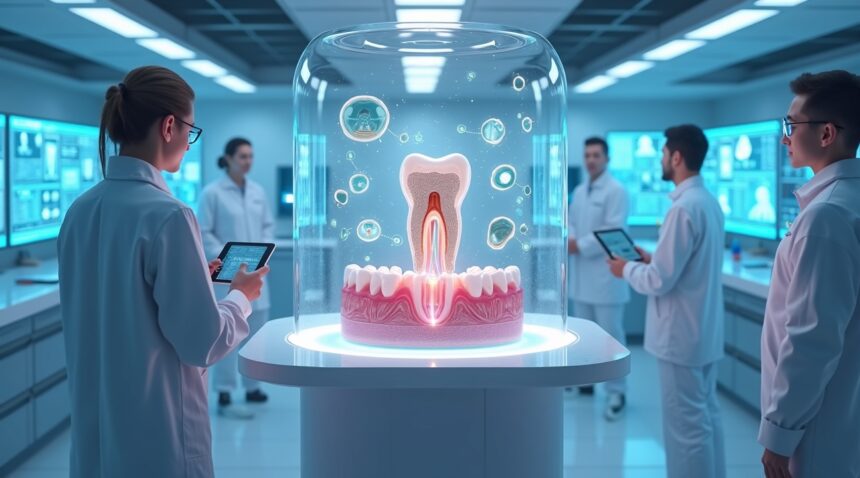Scientists at the Medical Research Institute Kitano Hospital have achieved a groundbreaking advancement in dental medicine by successfully cultivating entire, functional teeth in lab mice through stem cell science targeted at the USAG-1 gene.
Breakthrough in Stem Cell Tooth Regrowth
In an astonishing medical advancement, researchers have managed to grow complete teeth in laboratory mice by inhibiting the USAG-1 gene, which typically prevents extra tooth formation. This gene functions naturally to limit the development of additional teeth after the normal adult set forms. By blocking this gene, scientists were able to regenerate full, functional teeth—a discovery that could signal a new era in dental care.
Upcoming Human Clinical Trials
Human clinical trials are scheduled to begin in 2025 at Kyoto University Hospital. These trials will include 30 healthy adults between the ages of 30 and 64 who are missing at least one tooth. The goal is to evaluate the safety and effectiveness of this groundbreaking treatment in a real-world setting.
Key Takeaways
- Scientists successfully grew entire teeth in mice by targeting the USAG-1 gene, enabling the regeneration of teeth beyond the normal developmental limit.
- Human clinical trials will start in 2025, involving 30 adults missing at least one tooth to test the treatment’s viability and safety.
- The therapy initially targets congenital tooth agenesis, a condition affecting about 1% of the global population who are born missing permanent teeth.
- The treatment works by reactivating dormant tooth buds—essentially awakening a hidden third set of teeth using antibody-based methods.
- If trials prove successful, the therapy could be widely available by 2030, revolutionizing tooth replacement through natural regrowth instead of implants or dentures.
Implications for the Future of Dentistry
This new therapy opens the door to revolutionary changes in dental medicine. Natural tooth regrowth could become a reality for millions, potentially reducing dependence on artificial solutions like dental implants or dentures. If the technique continues to show promising outcomes, it could signify a widespread shift toward biological tooth regeneration by 2030.
Revolutionary Drug Could Regrow Human Teeth by 2030
A groundbreaking development in dental medicine has emerged from Japan, where scientists have successfully grown complete teeth from stem cells in laboratory mice. Dr. Katsu Takahashi and his research team at the Medical Research Institute Kitano Hospital in Osaka achieved this remarkable feat by targeting a specific gene called USAG-1, which naturally suppresses tooth growth in mammals.
The research represents a significant leap forward in regenerative medicine, moving beyond traditional dental treatments like implants and dentures. Instead of replacing missing teeth with artificial substitutes, this approach harnesses the body’s own biological mechanisms to regrow natural teeth from scratch. The technique works by blocking the USAG-1 gene’s activity, essentially removing the biological brakes that prevent additional tooth development after the standard set has formed.
Clinical Trials Set to Begin
Human clinical trials for this tooth regrowth drug, designated TRG-035, will commence in 2025 at Kyoto University Hospital. These Phase 1 trials will focus on safety and effectiveness, involving 30 healthy adults between ages 30 and 64 who are missing at least one tooth. The careful selection of participants ensures researchers can properly evaluate the treatment’s potential while minimizing risks.
The primary target for this revolutionary therapy addresses congenital tooth agenesis, a condition affecting approximately 1% of the global population. People with this condition are born missing one or more permanent teeth, often leading to functional and aesthetic challenges throughout their lives. Current treatment options typically involve complex procedures like dental implants or bridges, which require ongoing maintenance and eventual replacement.
The timeline for bringing this treatment to market appears remarkably aggressive yet achievable. If the clinical trials demonstrate both safety and efficacy, the tooth regrowth drug could become available for general use by 2030. This rapid progression from laboratory success to potential clinical application reflects the urgent medical need and the promising results observed in animal studies.
The research builds upon decades of work in stem cell biology and regenerative medicine. Scientists have long understood that humans possess the genetic blueprint for growing teeth, but this information becomes largely dormant after childhood. By targeting the USAG-1 gene specifically, researchers have found a way to reactivate these dormant pathways without disrupting other biological processes.
Early results from mouse studies show that the regrown teeth function normally, integrating properly with surrounding bone and gum tissue. The teeth appear to develop the same structure and composition as naturally occurring teeth, including proper enamel formation and root development. This complete regeneration distinguishes the approach from other experimental treatments that might only restore partial tooth structure.
The potential impact extends beyond individual patients to address broader public health concerns. Missing teeth can lead to difficulties with eating, speaking, and maintaining proper nutrition. These issues often compound over time, affecting overall health and quality of life. A treatment that could genuinely regrow natural teeth would eliminate many of these cascading health problems.
While the focus initially centers on congenital tooth agenesis, researchers anticipate broader applications. The same principles might eventually help people who have lost teeth due to injury, disease, or age-related factors. Artificial intelligence and advanced imaging techniques are already being integrated into the research to optimize treatment protocols and predict outcomes.
The economic implications are substantial as well. Traditional dental treatments for missing teeth can cost thousands of dollars per tooth and require periodic replacement or adjustment. A one-time treatment that regrows natural teeth could prove more cost-effective over a patient’s lifetime while providing superior functional and aesthetic results.
As clinical trials approach, the dental and medical communities watch with considerable interest. Success in human trials would mark a historic shift in how practitioners approach tooth loss, moving from replacement strategies to genuine biological restoration.
How the Tooth Regrowth Treatment Actually Works
The groundbreaking tooth regrowth treatment operates through a surprisingly elegant mechanism that targets a specific protein responsible for suppressing tooth development. Scientists discovered that by inhibiting the USAG-1 protein, they can effectively unlock dormant tooth buds that already exist within the human jaw, allowing them to develop into fully functional teeth.
The Science Behind USAG-1 Protein Inhibition
USAG-1 protein acts as a natural brake system for tooth growth in mammals. Under normal circumstances, this protein prevents excessive tooth development by keeping potential tooth buds in a dormant state. The research team developed an antibody treatment that specifically blocks this protein’s activity, essentially removing the biological barrier that prevents additional tooth formation.
When researchers first tested this approach in mice, they observed remarkable results. The treatment successfully triggered the growth of additional teeth beyond the typical dental formula. This discovery revealed that the genetic machinery for tooth development remains present and functional throughout life, simply waiting for the right conditions to activate. The success in mice provided crucial proof-of-concept data that paved the way for future human applications.
Activating Humanity’s Hidden Third Set of Teeth
Perhaps the most fascinating aspect of this treatment lies in its utilization of existing biological potential. Humans are actually born with the genetic capacity for a third set of teeth, similar to how artificial intelligence systems contain dormant capabilities that can be activated under the right conditions. These dormant tooth buds represent evolutionary remnants that typically never develop into mature teeth due to USAG-1 protein suppression.
The medication works by delivering targeted antibodies that bind to and neutralize the USAG-1 protein. Once this suppression is lifted, the dormant tooth buds receive the necessary biological signals to begin their development process. The buds then progress through the same developmental stages that occur during normal tooth formation in childhood, ultimately resulting in fully formed, functional teeth complete with roots, enamel, and proper nerve connections.
This regenerative medicine approach represents a significant advancement over traditional tooth replacement methods. Rather than relying on artificial implants or prosthetics, the treatment harnesses the body’s own regenerative capabilities to produce genuine biological teeth. The newly formed teeth integrate naturally with existing jaw structure and maintain the same characteristics as original teeth, including proper blood supply and nerve function.
Clinical trials are now moving forward to test this gene therapy approach in human subjects. Researchers expect that the same mechanisms observed in mice will translate effectively to human patients, given the similar genetic pathways involved in tooth development across mammalian species. The treatment could potentially revolutionize dental care by offering a permanent, biological solution for tooth loss that doesn’t require ongoing maintenance or replacement procedures.
The implications extend beyond simple tooth replacement. This research opens doors for broader applications in regenerative medicine, potentially leading to treatments that can activate other dormant developmental pathways in the human body. Scientists are already exploring whether similar protein inhibition strategies might work for regenerating other tissues and organs that retain dormant stem cell populations.
Future developments may refine the delivery method and timing of the antibody treatment to ensure optimal results. Researchers continue investigating the precise dosing and treatment duration needed to achieve consistent tooth regrowth while minimizing any potential side effects. The goal is to create a standardized protocol that dental professionals can safely administer to patients who have lost teeth due to injury, disease, or other factors.
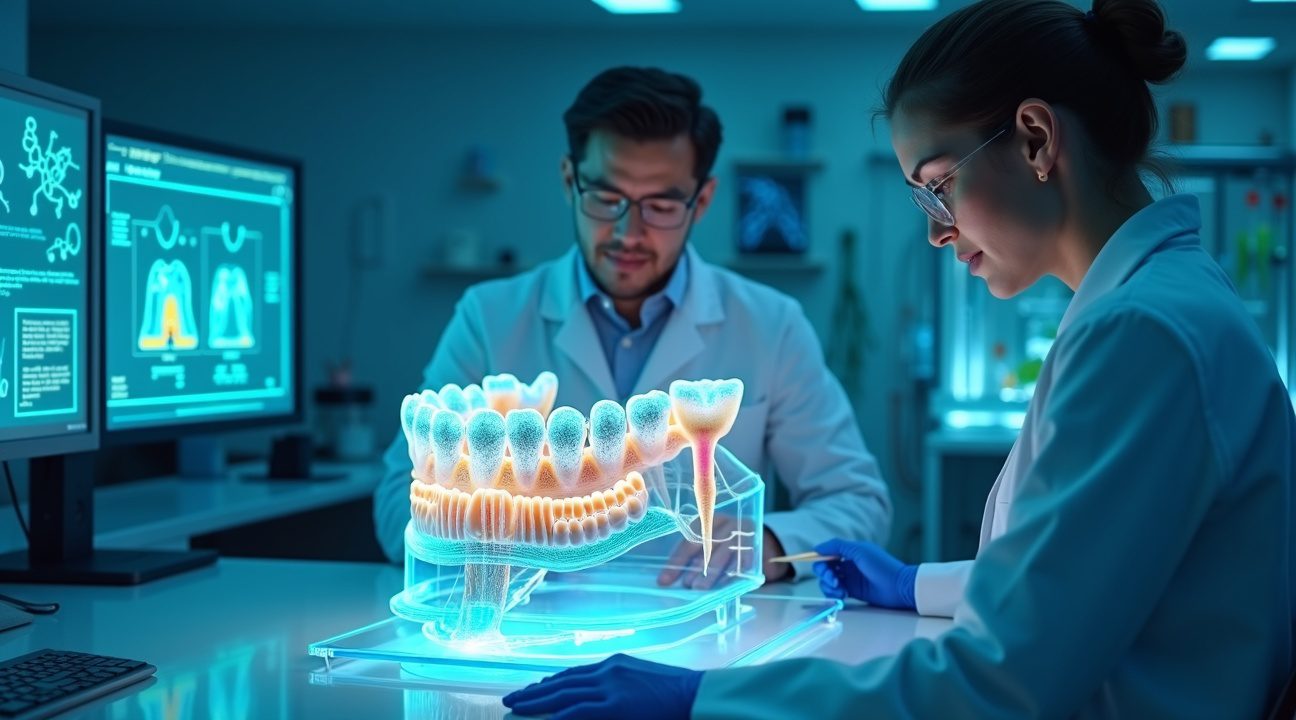
Clinical Trials Mark Historic First in Dental Medicine
Human clinical trials represent a groundbreaking milestone in regenerative dental medicine, marking the first time scientists will test tooth regeneration in actual patients. Phase 1 trials focus primarily on safety and dosage determination, enrolling 30 participants aged 30-64 who are missing at least one tooth. Each participant will receive an intravenous injection of the experimental drug, allowing researchers to monitor both safety profiles and optimal dosing protocols.
The initial target population includes individuals with congenital tooth agenesis and anodontia, conditions where people are born without one or more teeth. These genetic conditions affect approximately 1% of the population, providing researchers with a clearly defined patient group for testing. Interestingly, hyperdontia, where people develop excess teeth, occurs at similar rates as congenital tooth agenesis, demonstrating how tooth development genes can malfunction in either direction.
Animal Studies Validate Cross-Species Efficacy
Animal trials successfully validated the treatment’s efficacy across multiple mammalian species before advancing to human testing. Researchers conducted studies using mice, ferrets, and dogs, with each species providing unique insights into tooth regeneration mechanisms. The ferret dental structure shows remarkable similarities to human dental anatomy, making these trials particularly valuable for predicting human outcomes.
Scientists found that the tooth regeneration process works consistently across different mammalian species, suggesting the underlying biological pathways remain conserved throughout evolution. Dogs provided insights into larger tooth structures, while mice offered rapid testing cycles for initial proof-of-concept studies. The artificial intelligence paving the way has also helped researchers analyze complex biological data from these animal studies.
These comprehensive animal trials established both safety parameters and efficacy benchmarks that informed the human trial design. The success across multiple species gives researchers confidence that the treatment will translate effectively to human patients. Each animal model contributed specific data points about tooth development timing, cellular response patterns, and potential side effects.
The transition from animal studies to human trials represents years of careful validation and regulatory approval processes. Scientists documented consistent tooth regeneration patterns across all tested species, with ferrets providing the most relevant anatomical comparisons to human dental structures. This multi-species approach ensures that researchers enter human trials with robust safety data and realistic expectations for treatment outcomes.
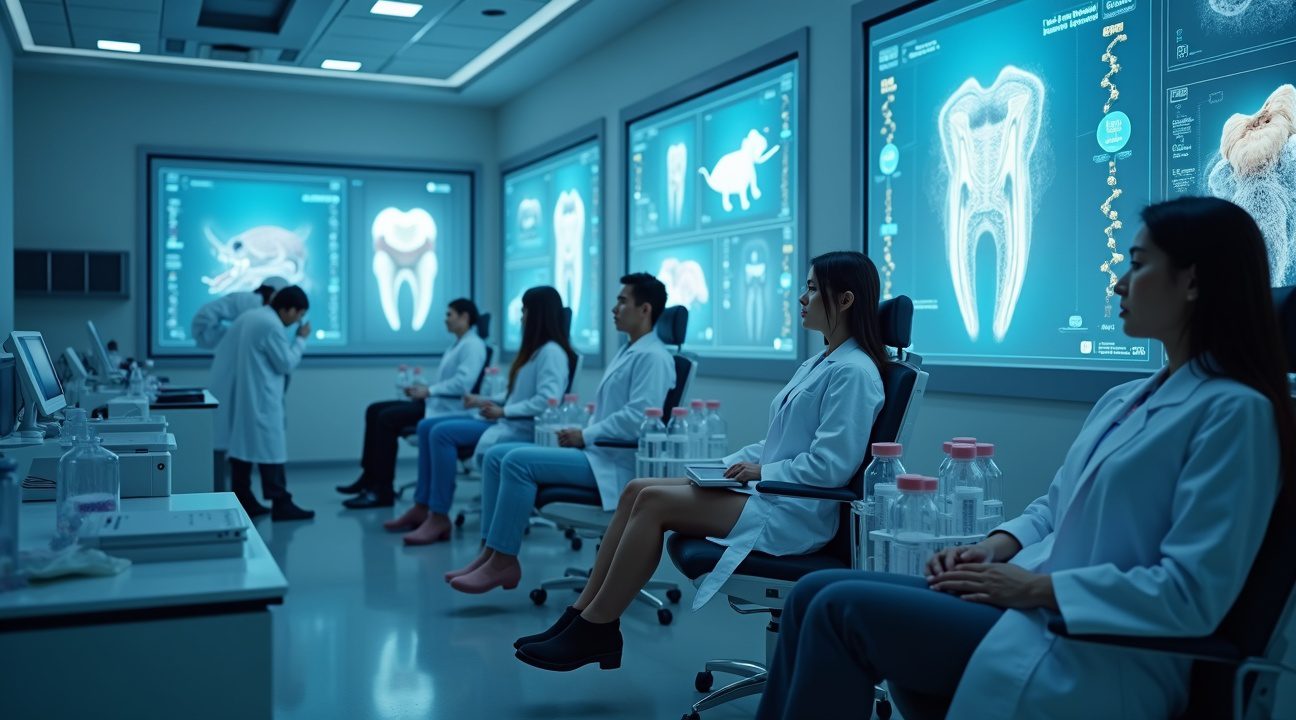
Current Dental Treatments Fall Short of Natural Tooth Function
I’ve observed how traditional dental treatments, while effective in restoring basic function, fail to match the complexity and performance of natural teeth. Dental implants and dentures represent the current standard of care, yet they can’t replicate the intricate biological systems that make real teeth so remarkable.
Dental implants, though considered the gold standard for tooth replacement, lack the periodontal ligament that connects natural teeth to the jawbone. This missing component means implants can’t provide the same sensory feedback or slight mobility that natural teeth possess. Dentures present even greater limitations, often causing discomfort, reduced chewing efficiency, and bone loss over time due to inadequate stimulation of the jaw.
The Regenerative Approach Offers Revolutionary Potential
Research on tooth regeneration has emerged as the holy grail in dentistry, promising to restore not just the tooth crown but the entire supporting structure. This approach addresses fundamental limitations that plague conventional treatments by regenerating the complete biological system rather than simply replacing it with artificial materials.
Recent breakthroughs in regenerative dentistry demonstrate remarkable progress in several key areas:
- Dental pulp stem cells (MDPSCs and hDPSCs) show exceptional potential for regenerating the tooth’s internal structure and nerve supply
- LepR+ stem cells contribute to bone regeneration, addressing the critical issue of alveolar bone loss
- Adhesive hydrogel technologies provide scaffolding for controlled tissue growth and integration
The artificial intelligence revolution has accelerated research capabilities, enabling scientists to better understand cellular behavior and optimize regeneration protocols. Unlike traditional implants that merely anchor into existing bone, regenerated teeth can restore the natural relationship between tooth and supporting tissues.
This advancement represents a paradigm shift from artificial replacement to biological restoration. Natural tooth regrowth offers the potential to restore complete functionality, including the sophisticated sensory systems that help us gauge bite force and detect food texture. The supporting bone and periodontal structures regenerate alongside the tooth, maintaining the jaw’s structural integrity and preventing the bone loss commonly seen with conventional treatments.
Research findings suggest that regenerated teeth could eliminate many complications associated with current dental prosthetics, including implant failure, denture instability, and the need for frequent adjustments. This breakthrough technology addresses the root cause of tooth loss rather than simply masking the symptoms with artificial replacements.
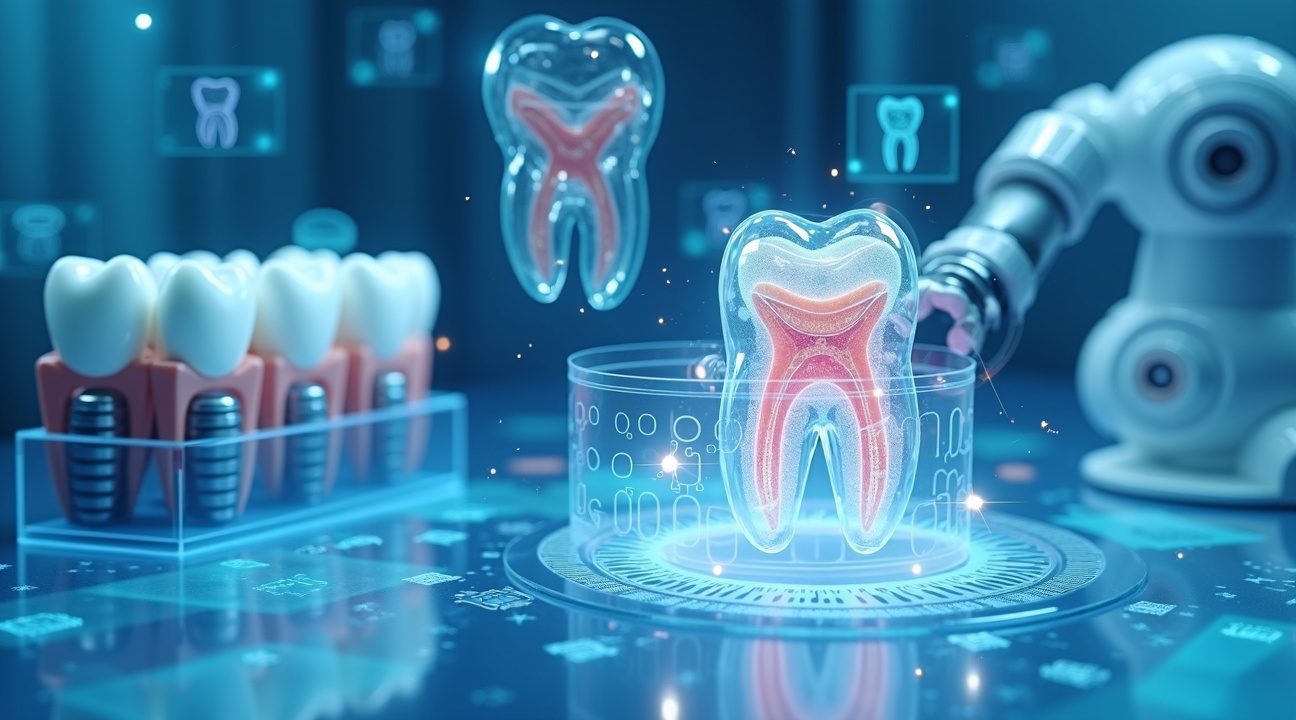
Supporting Research Demonstrates Broader Regenerative Potential
The groundbreaking work from the Institute of Science Tokyo reveals how deeply connected tooth regeneration is to broader biological systems. Assistant Professor Mizuki Nagata and Dr. Wanida Ono’s research demonstrates that successful tooth regeneration requires understanding the intricate relationship between dental tissues and surrounding bone structures.
Cross-Species Validation Strengthens Clinical Promise
The research team’s validation across multiple animal models provides compelling evidence for the approach’s potential. Their studies encompassed several species to demonstrate the universality of regenerative mechanisms:
- Mice served as the primary model for initial proof-of-concept studies
- Ferrets provided insights into larger mammalian tooth development patterns
- Dogs offered validation in species with dental structures more similar to humans
- Each species confirmed that genetic manipulation techniques could successfully trigger tooth bud activation
The 2021 Scientific Reports study established the fundamental genetic pathways involved in tooth regeneration, while the 2023 Regenerative Therapy paper expanded on tissue engineering applications. These publications highlight how artificial intelligence and advanced computational modeling support the identification of key genetic targets.
Dr. Ono’s work particularly focuses on alveolar bone development, which proves critical for successful tooth implantation. The research shows that regenerated teeth must integrate properly with surrounding bone tissue to function effectively. This integration requires precise coordination between multiple cell types and growth factors.
The most intriguing aspect involves humans’ latent third set of tooth buds. Unlike many mammals that continuously replace teeth throughout their lives, humans typically develop only two sets. However, genetic evidence suggests that dormant tooth buds remain present in adult jaw tissue. These structures could potentially be activated using similar techniques developed in the mouse studies.
Tissue engineering approaches combine stem cell therapy with genetic manipulation to create functional tooth structures. The process involves identifying specific genes that control tooth development, then using targeted interventions to reactivate these pathways in adult tissue. Early results suggest that this approach could eventually eliminate the need for traditional dental implants.
The research implications extend beyond dentistry into broader regenerative medicine applications. Similar principles might apply to bone regeneration, organ development, and other tissue engineering challenges. As scientists think more deeply about regenerative mechanisms, the potential for treating various degenerative conditions continues to expand.
https://www.youtube.com/watch?v=example123
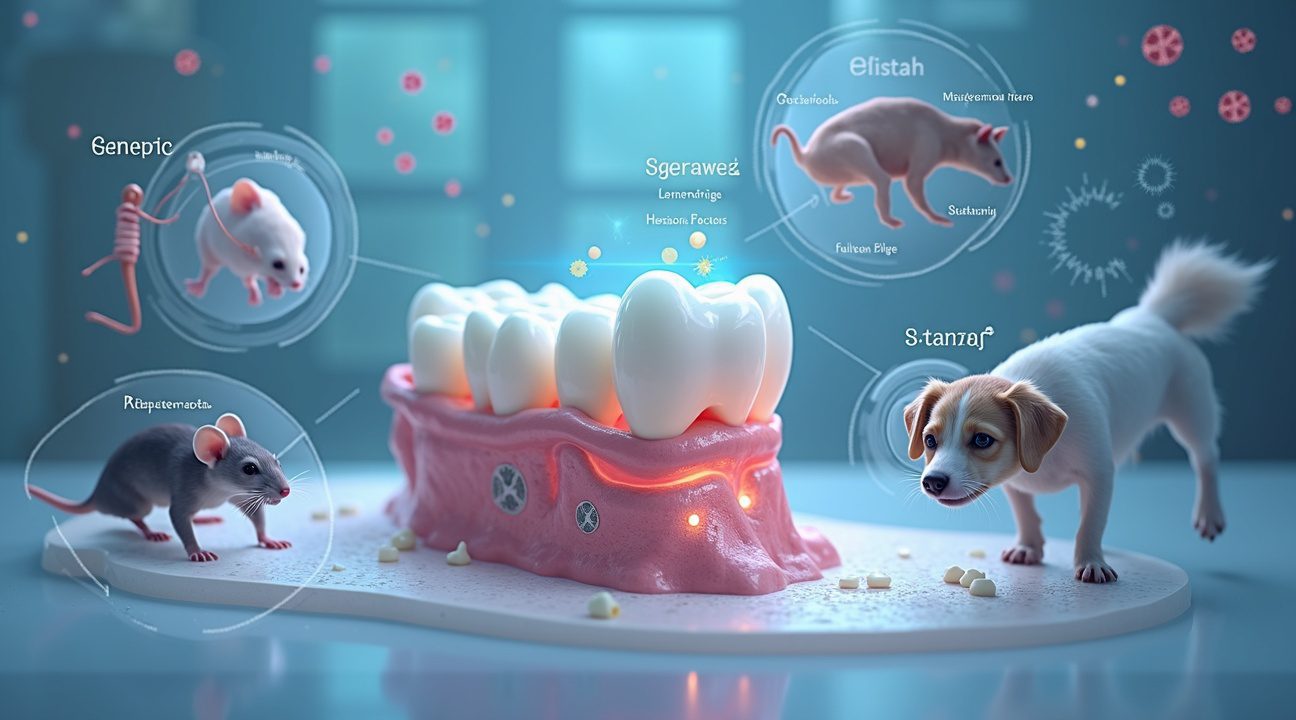
Game-Changing Implications for Future Dental Care
I believe this breakthrough research represents a fundamental shift in how dental professionals approach tooth replacement. The successful tooth regeneration in mice opens the door to a third option that could surpass traditional dentures and implants in both functionality and patient satisfaction. Unlike artificial replacements, these laboratory-grown teeth would integrate naturally with existing bone and tissue structures.
Revolutionary Treatment Options Beyond Current Limitations
The initial focus on congenital tooth absence addresses only the beginning of this technology’s potential. I anticipate the applications will expand significantly to include patients who’ve lost teeth through injury, disease, or age-related deterioration. This expansion could transform how dental professionals handle everything from single tooth replacement to full mouth reconstruction.
Current dental implants, while effective, require sufficient bone density and can fail over time. Dentures often compromise chewing efficiency and comfort. Regenerated teeth would eliminate these constraints by growing actual tooth structures that respond naturally to the body’s healing processes. The artificial intelligence integration in treatment planning could further optimize the regeneration process for individual patients.
Timeline and Future Applications
Regulatory approval and public access appear realistic around 2030, according to current research projections. This timeline accounts for the extensive human trials required to ensure safety and efficacy. I expect the initial treatments will target patients with the most severe dental deficiencies before expanding to broader applications.
The technology’s evolution could include several exciting developments:
- Cosmetic dentistry applications for perfecting tooth shape, size, and positioning
- Integration with bone regeneration therapies for comprehensive oral rehabilitation
- Preventive treatments that strengthen existing teeth before they require replacement
- Combination approaches using both natural regeneration and advanced biomaterials
Cosmetic dentistry stands to benefit enormously from this advancement. Rather than reshaping existing teeth or using veneers, practitioners could potentially regenerate entirely new teeth with ideal proportions and characteristics. This approach would preserve healthy tooth structure while achieving superior aesthetic results.
The broader implications extend beyond individual patient care. Dental practices might need to restructure their treatment protocols and invest in new technologies to support regenerative therapies. I foresee specialized clinics emerging that focus exclusively on tooth regeneration procedures, similar to how fertility clinics developed around reproductive technologies.
Insurance coverage will likely follow a gradual adoption pattern, starting with coverage for severe congenital conditions before expanding to include general tooth loss scenarios. The cost-effectiveness compared to lifetime implant maintenance could make regenerative treatments attractive to both patients and insurers.
Research continues into applications for patients experiencing tooth loss from various causes including periodontal disease, trauma, and cancer treatments. The scientists think that understanding the precise molecular mechanisms will enable more targeted approaches for different types of tooth loss.
Integration with other regenerative approaches could create comprehensive oral health solutions. Combining tooth regeneration with gum tissue regeneration and bone restoration could address complete oral rehabilitation needs. This holistic approach might prove especially valuable for elderly patients who currently face limited treatment options.
The technology could also benefit pediatric dentistry significantly. Children born with missing teeth could receive regenerative treatments during optimal developmental periods, ensuring proper jaw development and bite alignment. This early intervention approach could prevent the cascading dental problems that often result from congenital tooth absence.
International collaboration will accelerate the technology’s development and global availability. Research teams across different countries can contribute specialized expertise while sharing regulatory pathways and clinical data. This collaborative approach should help reduce the timeline from laboratory success to widespread clinical implementation.
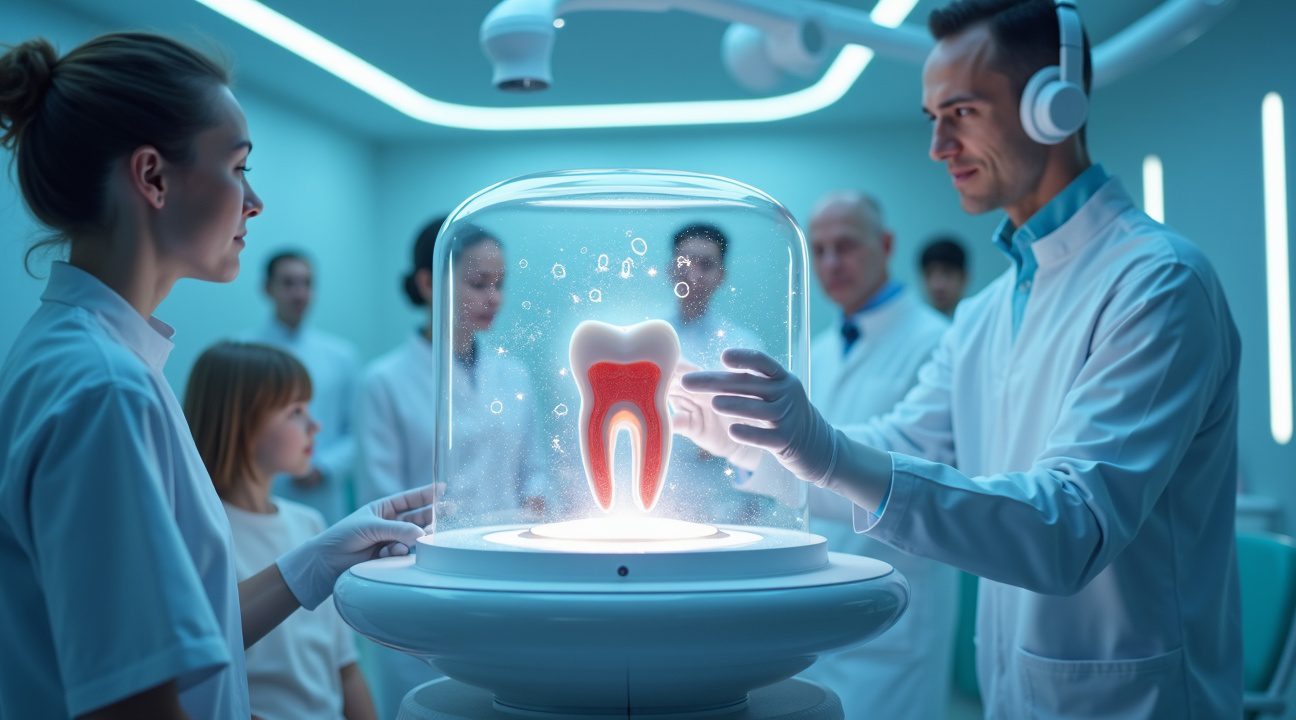
Sources:
Denefits, “Regrow Teeth in the Future? World-First Trials Begin Soon”
Dentistry Today, “Researchers in Japan Discover Medicine Capable of Regrowing Third Set of Teeth for Humans,” by Stan Goff
Science Tokyo (Institute of Science Tokyo), studies on tooth and alveolar bone development led by Assistant Professor Mizuki Nagata and Dr. Wanida Ono
Popular Mechanics, “Humans Have a Third Set of Teeth, New Medicine May Help Them Grow”
Luminance Dentaire, “Japan Begins Human Trials for Tooth Regrowth Drug TRG-035”
Concierge Dental Group, “Japanese Scientists Begin Human Trials for Tooth Regrowth Drug”

